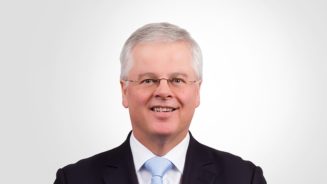Resource management
Gervais first got involved in managing resource investments after completing a master’s degree in mineral economics at the Colorado School of Mines. “They say it’s ‘the Harvard’ of resources because it’s where a lot of the executives in the oil and gas sector come from.”
Between doing his bachelor degree and the master’s he worked in the coal mining industry. But rather than returning to that, Gervais says he was attracted by the broader perspective offered by the investment side.
This involves geological analysis, examing how mines are performing and an understanding of the economic backdrop and how financial markets behave.
“For me it was also very important to be able to analyse how the companies are behaving and how they are approaching the locals, especially in the mining sector. I look at what kind of sustainability contracts they have with the government, with politicians, employees and the shareholders,” he says.
In terms of the economic backdrop to his current investment view, Gervais says the world economy, which powers demand for commodities, has suffered from five years of sluggish growth following the slowdown that hit much of the developed world in the wake of the eurozone debt crisis in 2011. This itself came hard on the heels of the ‘great recession’ of 2008/9.
“If you are buying into resources, you are making the call that the economy is getting better. If you get that correct, you make lots of money.”
Gervais says: “This market is pretty expensive for where we are at present. Either it accelerates, in which case your earnings will go up or we go back in recession, in which case we are in trouble, as deflation is just around the corner.”
One area from which Gervais has benefited recently is the vogue for investing in gold. “Gold has done well. We see it as an insurance or an alternative to other asset classes.
“We have been recommending our clients have 5% in their portfolio,” he says, suggesting it as an alternative to government bonds, which are now offering negative yields and are at risk of posting sharp losses when interest rates eventually rise.
The potential for this rising demand for gold from investors has generated something of a relief rally for gold mining company shares, though picking well-run gold miners is a difficult task, he says.
“Our three major holdings in the space are AngloGold Ashanti and Randgold Resources, both African, and Detour Gold, which is Canadian. We also hold gold bullion.”
Looking ahead, Gervais says he likes the natural gas sector. “In 2017, we have a number of pipelines that will bring more gas to market. After that we have a chance to sustain higher prices. That is where you can incentivise drilling and the gas prices are at a level that appeals to both the customer and companies in the sector.”
Gervais stresses that now is not the time to make a move in that sector, however, as prices are still too low “We are underweight natural gas in the US. We are viewing this as a long-term buy where perhaps there’s probably one more pullback and then you’re going to be good for five years.”
Another sector Gervais likes is containers and packaging products. Overall, he sees the commodities sector as offering a reasonably good buying opportunity at the moment, though again he stresses the time may not be right to take a big position. “Don’t double down just yet,” he warns.
He says the last commodity cycle, peaking at around 2011, was led by one buyer, China, which dwarfed every other variable in the market. “Those were good years but things are now more balanced. If we can get back to a situation where China is not just taking everybody along and where everybody has a reasonable economy, that will make for a more sustainable platform for growth in the commodity space.
“Demand growth will not be on the same scale as it was in the 2000s but we don’t need 5% demand growth in the commodity space. As in every other industry,we just need a solid 2-3% growth a year.”




